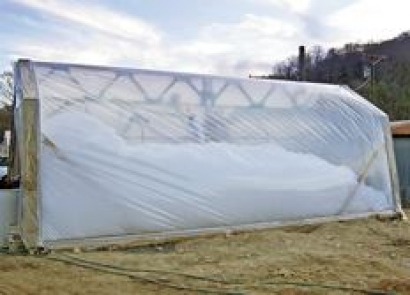
Both professors are with the university's Department of Technology and Environmental Design.
The grant, along with a current grant from the EPA, is being used to complete the university’s bioshelter/greenhouse at the Watauga County Landfill where the biomass conversion will occur.
When testing is complete, the project will move to the Energy Xchange in Spruce Pine and be used for public outreach and education.
For the past four years, researchers at Appalachian have worked to develop the most economical method for converting agricultural and forest biomass to useable products and energy.
“To test our system we are using wood chips, which are a plentiful resource in the mountains. Wood waste from wood processing also can be recycled into useful products. Any kind of biomass can be used in the system including agricultural waste, yard brush and even animal waste,” graduate assistant Miranda Harper said.
Domermuth and Yu believe their research could be used by farm or forest owners and provide potential sources of revenue.
A process called bio volatilization (BV) converts biomass into biochar, pyrolosis oil, fuel gas and heat. The biochar created from the BV process can be used as a soil additive to increase soil fertility and protect against soil-borne diseases. Biochar also improves water quality and reduces agricultural productivity and reduces nutrient leaching and soil acidity.
The waste energy created from the BV process will be used to heat the university’s bioshelter/ greenhouse at the Watauga County Landfill. The fuel created will be used to run a generator to produce electricity for day lighting in the winter at the bioshelter/greenhouse.
Domermuth’s and Yu’s research goals are to provide a sustainable energy source that can be used in the absence of sunlight (solar power) or wind (turbine power) as well as provide a potential revenue stream for farmers and forest owners.
Assisting with the project are graduate assistant and researcher Miranda Harper, public relations manager Rebecca Meade, furnace/kiln expert Eric Reichard, greenhouse site manager Ray Sinclair, and greenhouse assistants John Holladay and Gabe Arrandt.
For additional information:

